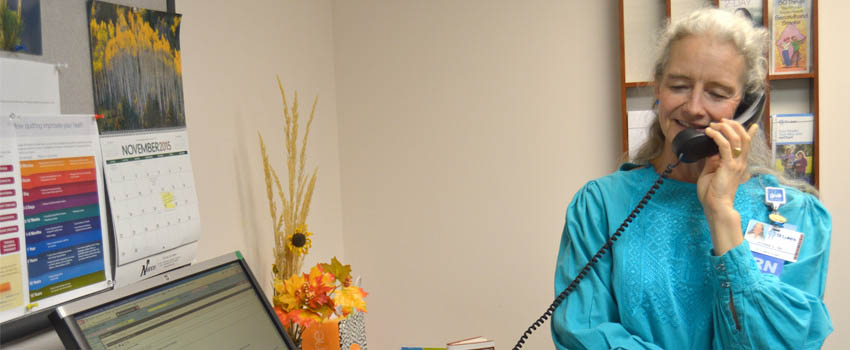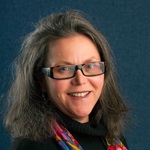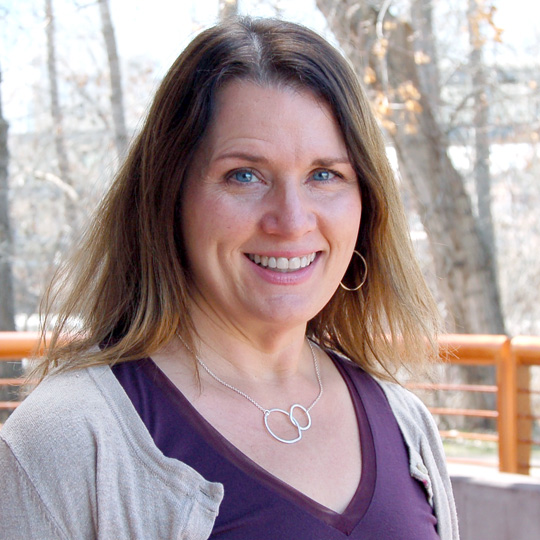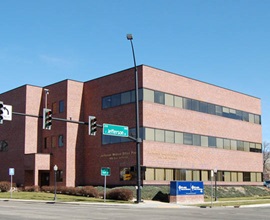Dr. Pate’s Prescription for Change
St. Luke’s and Tobacco Treatment: ‘We’re going for quit for life.’


Editor’s note: Following is a report on St. Luke’s year-old Tobacco Cessation Clinic by Chereen Langrill, St. Luke’s Health System communications coordinator.
It takes a herculean effort to help one person successfully quit using tobacco, but for the person who learns to live tobacco-free, that massive effort has huge payoffs.
A year-old tobacco treatment program at St. Luke’s integrates behavioral health and clinical support, along with medication to help people stop using tobacco. Dr. Jennifer Shalz directs the Tobacco Treatment Clinic, housed within St. Luke’s Clinic – Idaho Cardiology Associates in Meridian and in Boise at the Jefferson Street location.
A key component is frequent contact – in person and by phone – so participants can stay accountable and take advantage of resources. Making people aware of the dangers of tobacco use and lessons on how to quit are first steps that classes can offer, but Dr. Shalz and the team know that to really activate behavior change in a sustainable way takes a more concerted approach.
“This is not a group class where you learn that smoking is bad,” she said. “This is a pretty intensive intervention.”
In the first year, the program received nearly 1,000 referrals from primary care physicians and other care providers. The enrollment rate was 26 percent, and of those who enrolled, 37 percent quit using tobacco. The national rate is 25 percent.
“It’s a tough gig. People are so resistant (to quitting),” Dr. Shalz said. “It takes a lot of hard work to get people to quit and stay quit.”
It’s an uphill battle from the beginning. Dr. Shalz said providers are challenged because patients who use tobacco usually don’t want to quit, so it takes persistence to convince them to even consider trying. As a result, data associated with tobacco treatment programs can seem underwhelming.
And as with so much of the modern care financing structure across the country, reimbursement for the proactive tobacco intervention program isn’t designed to ensure its sustainability.
The program is covered 100 percent by insurance, with no co-pay because it is a preventative service, under the Accountable Care Act. But the program doesn’t make money, and it is labor-intensive to focus on a service that ultimately will keep people healthier and away from the hospital. In its first year, the tobacco treatment program reported an average of 12.5 hours per week that were spent on non-billable services.
For Dr. Shalz, the success goes deeper than the data. Each time someone successfully quits tobacco, there is a ripple effect.
For example, if a pregnant woman decides to quit smoking, she improves her life and the life of her child. She also improves the health of the people living in her home. Statistics show children in smoking households are more likely to smoke later in life, so she is also preventing her children from becoming future smokers, and from negatively affecting the health of the people in their lives.
“There’s a spillover effect, and that’s exciting,” Dr. Shalz said.
Lori Ford experienced that spillover effect when she went through the program. Ford, 45, smoked for more than 30 years. She has been tobacco-free for seven months and has inspired others in her family because of her healthier lifestyle.
Her husband and son-in-law have quit chewing tobacco. Ford has lost 26 pounds and is embracing physical activity that she once shunned.
“I actually joined a gym for the first time in my life and I like it, which is really weird,” she said. “My only regret is that I didn’t do this 10 years ago.”
Dr. Shalz describes the type of care provided by her team as “elbow support.” The program includes a social worker and two registered nurses who completed weeklong Mayo Clinic training to become certified tobacco treatment specialists.
Regular contact with the program team was key for Ford, who said she wouldn’t give in to her cigarette cravings because she knew she would have to confess when she discussed her progress during her next phone call with the care team.
Athena Evans-Campbell is a registered nurse and tobacco treatment counselor.
“I love the one-on-one counseling with people,” she said. “It’s having the time to give to somebody else, which is kind of rare in our world.”
Evans-Campbell has seen the difference it can make when a care provider has dedicated time to spend with someone who wants to stop using tobacco. She considers it an investment in the future.
“I feel very, very grateful to have this opportunity,” she said.
Dr. Shalz hopes the program, now in its second year, will grow. The Treasure Valley program is offering consultative support in McCall, and Dr. Shalz hopes to increase referrals to the existing program.
“Ninety-five percent of people who quit on their own won’t be successful,” Dr. Shalz said. “We’re going for quit for life.”
Before and After: How Two Ex-Smokers View Life Today
The Great American Smokeout is observed nationally on Nov. 19. For two Nampa women, the observance represents the hard work they invested as participants in St. Luke’s Tobacco Treatment Clinic.
Lori Ford quit smoking for both of her pregnancies but then started up again after her children were born. Once she became a grandmother, she began to think about trying to quit again.
Her primary care physician, Dr. Brenda Adams, suggested the tobacco treatment program, and she decided to try, even though previous attempts had failed. The difference this time was a combination of behavioral health support, ongoing conversations with the care team and medication.
Ford doesn’t crave cigarettes now. She uses her cigarette lighters to light candles. She savors the energy she has to climb the steps in her house and take hikes during camping trips in Donnelly. She plans to continue her weight-loss journey and wants to lose another 54 pounds. She has more money now, and her clothes no longer smell like smoke.
“It’s not even the money,” Ford said. “It’s the time I wasted.”
Ford used to leave conversations with friends and family to go outside and smoke during celebrations and other occasions. She hopes she has stopped smoking soon enough to give her many years ahead. Her father died of lung cancer in 1997. Ford has three older brothers, and two of them still smoke.
“Sometimes I can’t even believe I am the same person,” she said.
Like Ford, Connie Middleton is enjoying a more active lifestyle now that she has completed the program. Middleton, 64, began smoking at 15 and has not had a cigarette in 10 months. She joined a gym using the money she once spent on cigarettes.
Quitting wasn’t easy, but support from registered nurse and tobacco treatment counselor Athena Evans-Campbell helped her get through each day. A breakthrough moment came when Evans-Campbell explained how chemicals in the brain cause the body to crave nicotine.
Middleton realized her addiction wasn’t about a lack of willpower.
“That was a big help, just having her talk to me and showing me what was going on in my brain,” Middleton said. “I thought it was just a habit.”
About The Author

Chereen Langrill was formerly a communications coordinator for St. Luke’s Health System.




